Planning a trip to visit Arkansas’s tallest mountain? Learning about an area’s fauna before visiting can enrich your experience and understanding of the region’s ecology.
In this guide, we’ll talk about five species of animals that live atop Arkansas’s tallest mountain. Some of these animal species are plentiful across North America while one is only found living on this particular mountain. Read on to learn more.

What is the Tallest Mountain in Arkansas?
The state of Arkansas is home to the Ouachita and the Ozark mountain ranges. Both of these ranges primarily exist in the western half of the state. These ranges formed over 300 million years ago.
The tallest mountain that exists in Arkansas today is Mount Magazine, whose peak stands at 2,753 feet above sea level. The US Forest Service currently owns Magazine Mountain, which is part of the Ozark and St. Francis National Forests.

Mount Magazine is in the Ouachita mountain range and the Ozark and St. Francis National Forests.
©iStock.com/zrfphoto
This peak is so-named by French settlers in the early 19th century who saw the mountain peak as resembling a storehouse (called magazin in French). Magazine Mountain is a part of the Ouachita mountain range. It’s important to consider that the current “official” name of Mt. Magazine only reflects the relationship that one group of people, who were colonizers of this land, had with it. Settlers and colonial institutions have renamed, several times over, so much of the lands and landmarks of the so-called US.
What Animals Live Atop Arkansas’s Tallest Mountain?
The ecology of Mount Magazine is wonderfully diverse and complex. Some common critters such as white-tailed deer and coyotes roam this landscape. Additionally, Mt. Magazine is home to some less common species such as the shagreen snail, rufous-crowned sparrow, and the Diana fritillary butterfly.
Below, we’ll talk more in-depth about these five species of animals you may see on a trip to Mt. Magazine.
Animals That Live Atop Arkansas’s Tallest Mountain:
1. Coyotes (Canis latrans)
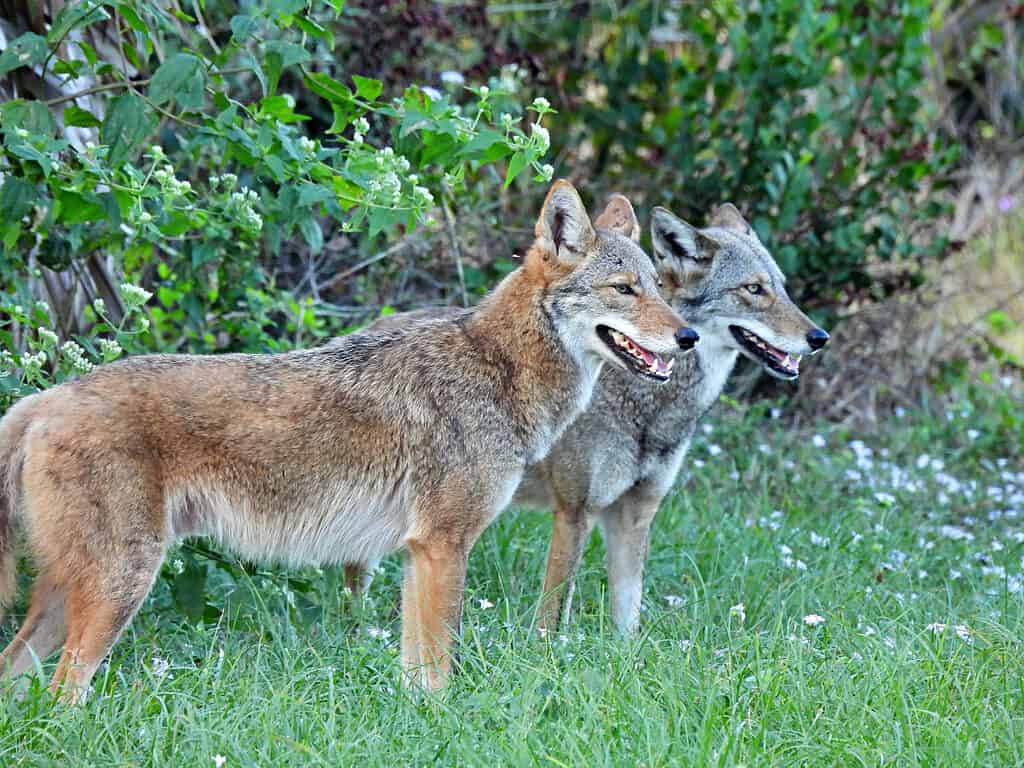
Coyotes thrive on Mount Magainze as small prey hunters, foragers, and scavengers. If you visit this beautiful mountain, listen to the yipping, barks, and howls of coyotes at night.
©iStock.com/passion4nature
On Mount Magazine, coyotes (Canis latrans) are part of the ecological niche of scavengers and small-game hunters. This native, wild canine species is incredibly adaptable are able to survive and thrive in both wilderness and densely human-populated areas. As a member of the Canidae family, coyotes are closely related to other canines such as wolves, dogs, foxes, and jackals.
While coyotes were initially only native to the prairies and desert regions of central and western North America, they have since expanded their range to all of the continental US, Canada, Mexico, and Central America.
Part of their expansion is due to the human-caused decline of wolves and mountain lions and their expertise being non-specialists. As non-specialists, coyotes enjoy a wide diet that helps them adapt to urban and wild regions. They hunt small prey such as rodents, squirrels, rabbits, birds, reptiles, and insects. They also forage for fruit and readily scavenge food humans have thrown away or left outside. Sometimes, they’ll work together to take down larger prey such as deer, but this is much less common. There are several subspecies of coyotes that have varying weight ranges from 15-40 pounds.
On Mt. Magazine, the coyotes are likely adept small prey hunters, foragers, and scavengers of food left out by human visitors of the area. The current estimation of the coyote population in Arkansas exceeds 100,000. If you’re camping or staying in a lodge on Mt. Magazine you may be lucky and hear the coyotes yipping, barking, and howling at night.
2. White-Tailed Deer (Odocoileus virginianus)
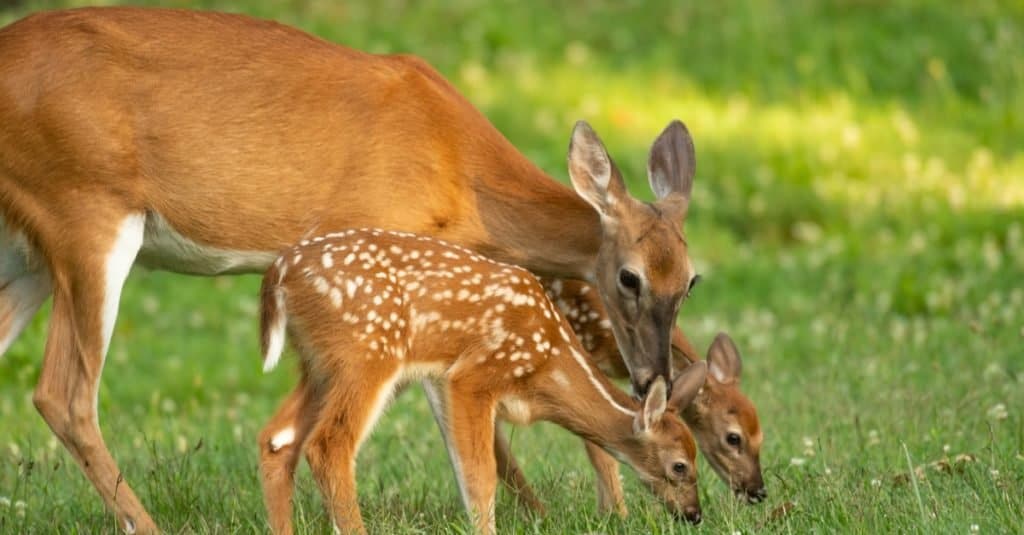
Arkansas is home to almost 1 million white-tailed deer. If you visit Magazine Mountain, your best chance to see these deer are early in the morning and at dusk.
©Tony Campbell/Shutterstock.com
Arkansas is home to about 1 million white-tailed deer (Odocoileus virginianus). Like coyotes, they are rather adaptable and can live in both human-populated and wilderness areas.
Mount Magazine provides an excellent habitat for these animals with dense vegetation for better concealment and protection from predators and a range of plants, fruits, fungi, and nuts for feeding.
White-tailed deer at the most active around dawn and dusk. If you’re hoping to spot these animals on your visit to Mt. Magazine, it’s best to head out early in the morning or just before nightfall. To increase your chances of seeing them out and about during these times, you can pick a quiet spot to sit in the forest or take a slow drive through the beautiful scenery and keep your eyes open for these lovely animals.
3. Magazine Mountain Shagreen Snail (Infectarius magazinensis)
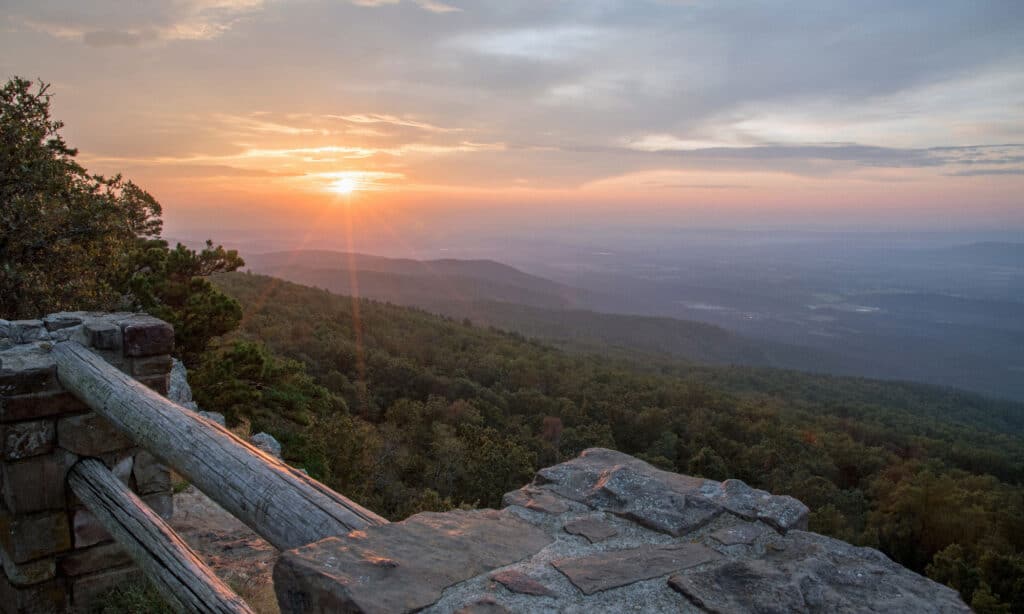
The shagreen snail lives only on Mount Magazine, the tallest mountain in Arkansas.
©Stephan Hawks/Shutterstock.com
While some critters that live on Magazine Mountain are found in abundance across North America, the Magazine Mountain shagreen snail (Infectarius magazinensis) lives on Magazine Mountain only, making it an adorable gastropod ambassador of this lovely mountain.
This terrestrial snail, also known as the middle-toothed snail, was added to the Federal List of Endangered and Threatened Wildlife in 1989. However, due to conservation efforts, in 2013 this snail became the first invertebrate to be declared as a recovered species and removed from the federal endangered species list.
The Mt. Magazine shagreen snail is medium-sized, features a dusky brown or buff-colored shell, and feeds on fallen oak flowers and other local vegetation. You can find this endemic land snail in cool, moist areas of the forest typically near or on rocky areas and slopes.
4. Rufous-Crowned Sparrow (Aimophila ruficeps)
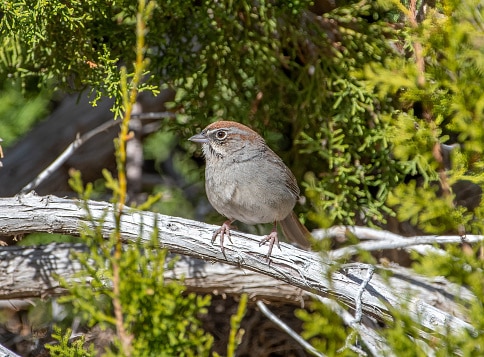
Rufous-crowned Sparrows inhabit the scrubby hillsides of Mount Magazine.
©Gerald DeBoer/ via Getty Images
Magazine Mountain is also home to Arkansas’s only known remaining population of rufous-crowned sparrows (Aimophila ruficeps). They are currently the world’s most eastern-dwelling population of their species.
This bird inhabits the scrubby hillsides of the mountain where it feeds on a diverse diet of seeds, vegetation, and insects. Seeds are the primary meal in the fall and winter while their diet is more insect-heavy in the spring and fall.
If you’re hiking the south-facing bluffs of Mount Magazine, look to the ground rather than the sky for this species. The rufous-crowned sparrows spend much of their time terrestrially where they hunt, forage, and rest under the cover of vegetation in grassy, juniper-hardwood forests.
Look for a grayish-red-brown sparrow with a bright red-brown crown (rufous crown), long tail feathers, a white eye ring, a red-brown streaked back, and a red-brown eye streak.
5. Diana Fritillary Butterfly (Speyeria diana)

Diana Fritillary butterflies can only be seen in forest ecosystems.
©Wirestock/ via Getty Images
Fluttering across Arkansas’s tallest mountain is the state butterfly, the Diana fritillary butterfly (Speyeria diana). This large, lovely forest-dependent butterfly is currently threatened across much of its range due to habitat loss and the destruction of the forest ecosystems in which this species lives. It has largely disappeared from lowland habitats but still persists at higher elevations such as Mt. Magazine.
The males of this species feature outer wings that are black-brown with orange markings. The females feature outer wings that are black with lovely iridescent blue markings. As large butterflies, they have a maximum wingspan of about 3.5 inches.
They thrive in moist, woodland areas of Magazine Mountain and have a relatively long lifespan of four to five months. If you wish to spot these beautiful butterflies during a trip to Magazine Mountain, head to their described habitats from June through early September.
In the spring in their caterpillar form, they feed on violet leaves and flowers. As adults, they feed on nectar from a range of plants including milkweed, ironweed, and red clover.
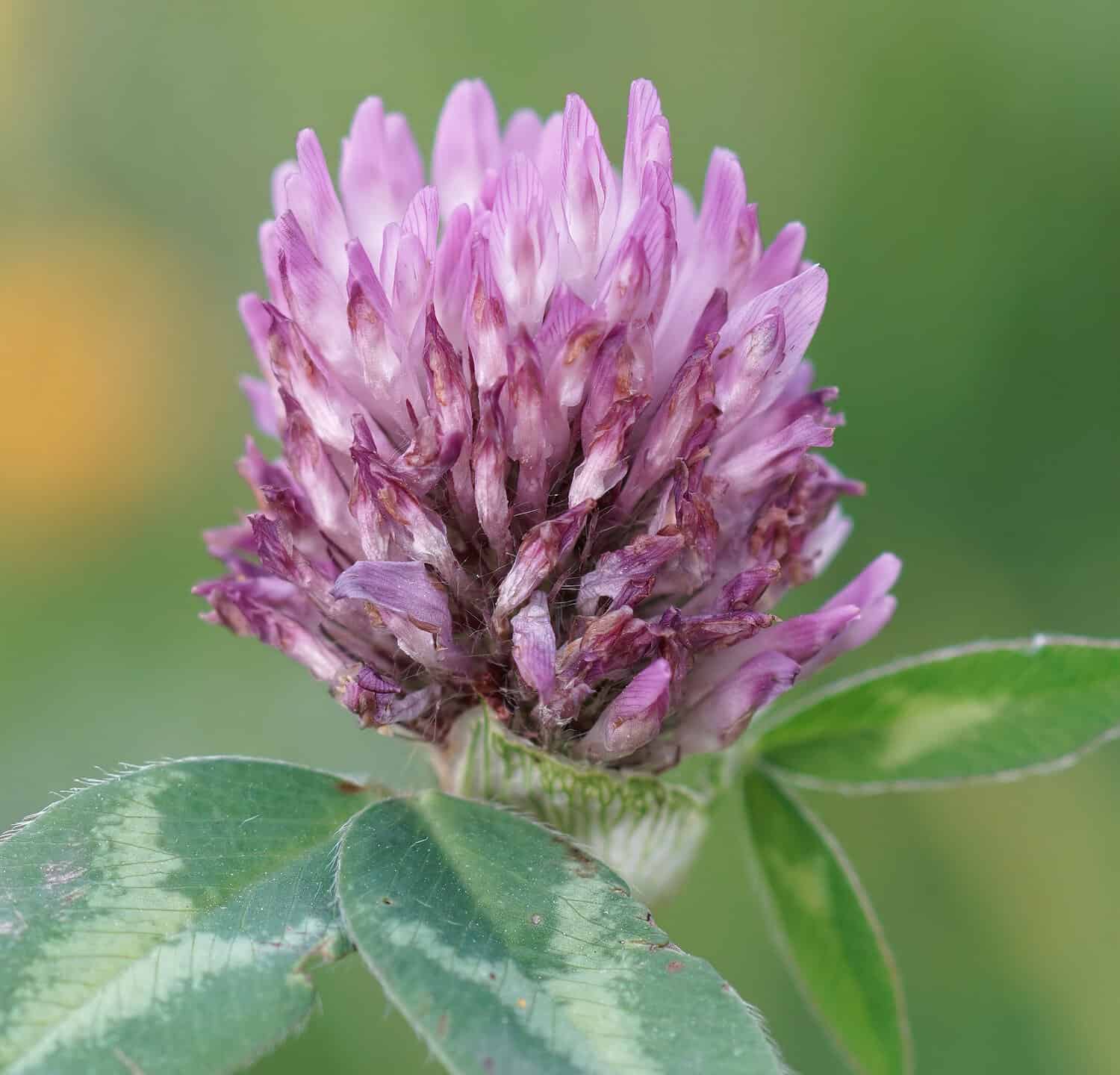
If you see red clover blooming on Magazine Mountain you may be lucky enough to see Diana fritillary butterflies feeding on its nectar.
©Oakland Images/Shutterstock.com
Summary of 5 Animals That Prowl Atop Arkansas’s Tallest Mountain
| Animal | Where to Find Them |
|---|---|
| Coyotes | All over the mountaintop |
| White-Tailed Deer | Among dense vegetation |
| Magazine Mountain Shagreen Snail | In cool, moist, areas of the forest on rocky slopes |
| Rufous-Crowned Sparrow | Scrubby hillsides of the mountain |
| Diana Fritillary Butterfly | In moist woodland areas |
The photo featured at the top of this post is © Shawn Herrington/Shutterstock.com
Thank you for reading! Have some feedback for us? Contact the AZ Animals editorial team.







